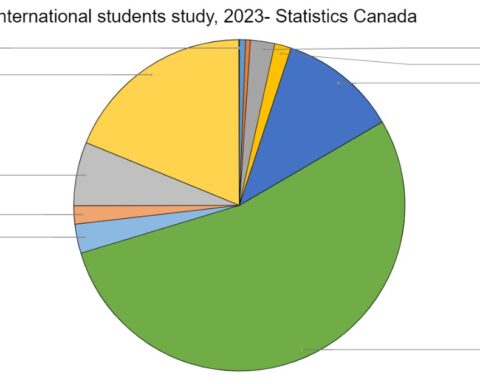The Singh family home is a one-storey building of brick and cement on one of the main streets in Bibipur, a village of 1,000 in Punjab, northern India. The house has cracks in its walls and a roof of wood and mud that leaks during monsoon season. It was built about sixty years ago, and every decade or so since, whenever government workers have repaved the road outside the house, they’ve simply added another layer of asphalt on top of what was already there. Over time, the road has grown higher and higher, and the house has seemed to sink in contrast.
Kushandeep Singh was born here in 1999, and by the time he was a teenager, the house sat well below grade. Whenever it rained, water would stream in off the road and the family would rush to try to hold it back as best as they could with brooms and buckets.
Like just about everyone in Bibipur, the Singhs are farmers. The family owns a small plot—twelve acres of wheat and rice with a few cows and buffalo. On warm days as a child, Kushandeep would run off with his friends and bathe in the same pond the cows lolled around in. As landowners, the Singhs were far from the poorest in town, but they were a long way from wealthy. Fourteen people lived in the three-bedroom house: Kushandeep, his younger sister, and his parents in one room; one set of grandparents in another; and his uncle, aunt, and cousins in the third.
The family’s biggest investment by far was Kushandeep. Most of the kids in his village learned while sitting on the floor of the local government school, but Kushandeep’s father insisted on sending him to the nearest city, Patiala, to attend a private school with basketball courts and a cricket pitch and instruction in English. “My father never compromised on my education,” says Kushandeep. The tuition alone cost almost a third of the family’s income.
His father hired a rickshaw to ferry Kushandeep an hour to school each way, picking up other students en route. Over the years, on long rides down dusty highways, Kushandeep would sit back and watch the billboards float past—an ever-shifting window into the world outside Bibipur. When he was young, all the ads were for local restaurants and stores. As he grew older, billboards for multinationals like McDonald’s followed. Finally, as Kushandeep neared the end of secondary school, a new product began to appear: postsecondary education in Canada.
A decade ago, few people in rural Punjab were thinking about schools in Canada. It was a cold, mysterious place that didn’t hold much appeal. “But, in the past five or six years, it’s become a hot topic,” says Prithvi Raj, a student in India who was preparing to study overseas when he spoke with me.
“Canadian education is being sold like hotcakes. You don’t even have to sell it—people will just come and buy.”
The product being advertised on billboards in Patiala is the same one that thousands of recruiters are hawking at education fairs in Beijing and private-school visits in Rio de Janeiro: a new version of the Canadian immigrant dream. The pitch is straightforward. First, get a student visa to study in Canada—the specific school doesn’t particularly matter. After that, get a postgraduate work permit that lets you live and work in the country for up to three years. Then apply for permanent residency. When described by a seasoned recruiter, the process seems simple. Details about what to study, or the actual odds of becoming a permanent resident, aren’t important. What’s important is the idea that, if you run that gauntlet, you can build a life beyond anything you could dream of in a place like Bibipur. “Every student is going to these agents and saying, ‘I want to go to Canada,’” says Kushandeep.
At eighteen, Kushandeep was a baby-faced teenager with big brown eyes and a thoughtful, earnest way of expressing himself. He did well in school, though not as well as some of the richer kids in his class. His English was improving, but he had never left the state, let alone the continent. He had one distant cousin on his father’s side who had studied in British Columbia. But, as far as he knew, not a single person from his village had ever gone to school overseas. When Kushandeep did well on his English proficiency exams and education abroad began to seem like a real possibility, his family considered borrowing money from every relative and friend they knew. But the numbers didn’t add up. For an international student, tuition at a Canadian school started at $20,000 a year, excluding the cost of living. In a good year, if the harvests went well, the Singh family earned about $9,000 in profit. Eventually, it was decided: the family would mortgage their farm.
Students like Kushandeep have complicated the usual picture of international study. The 2000s-era stereotype of the pampered young foreigner, usually from mainland China, who drives flashy sports cars and shops for Gucci bags between classes was always a caricature, but now it’s entirely divorced from reality. In 2019, 34 percent of the more than 642,000 international students in Canada were from India, well ahead of China’s 22 percent.
Many of these students are from Punjab, and they generally attend small community colleges, not internationally renowned universities. A recent study by Rakshinder Kaur and Kamaljeet Singh, professors of education at Punjabi University Regional Centre, surveyed students attending an English-language training school in preparation to study abroad: 80 percent came from farming families, most from small farms. When asked where they wanted to study, 78 percent said Canada. Mortgaging land to cover tuition has become common, with more and more families literally selling the farm to send their children to community colleges.
These students are driving an international education industry that has exploded in recent years, their numbers tripling in the last decade. Today, Canada says it’s the third most popular country for study in the world behind only the United States and Australia. In press releases and reports, the federal government brags that foreign students bring over $21 billion into the economy each year—more than auto parts, more than lumber. Those numbers are the result of a decade of careful nurturing, a triumph of salesmanship, and carefully calibrated government policies.
International students are also the product of a system that has blurred the lines between immigration and education in an unofficial, ad hoc arrangement meant to appeal to potential immigrants while avoiding any responsibility for their settlement. It’s a system that is quietly transforming postsecondary institutions, which have grown dependent on fees from foreign students and therefore on the shadowy world of education agents who deliver them. And it’s a system built on attracting teenagers like Kushandeep from small villages across the world, taking their money, and bringing them to campuses from small-town Nova Scotia to suburban BC with lofty promises for the future but little regard for what actually happens to them once they arrive.
Read the full story in The Walrus here (republished with permission)




